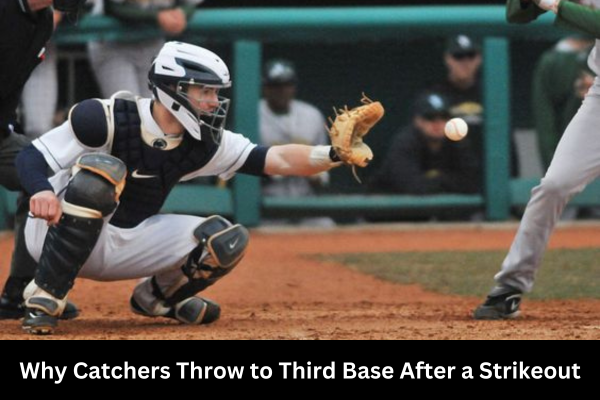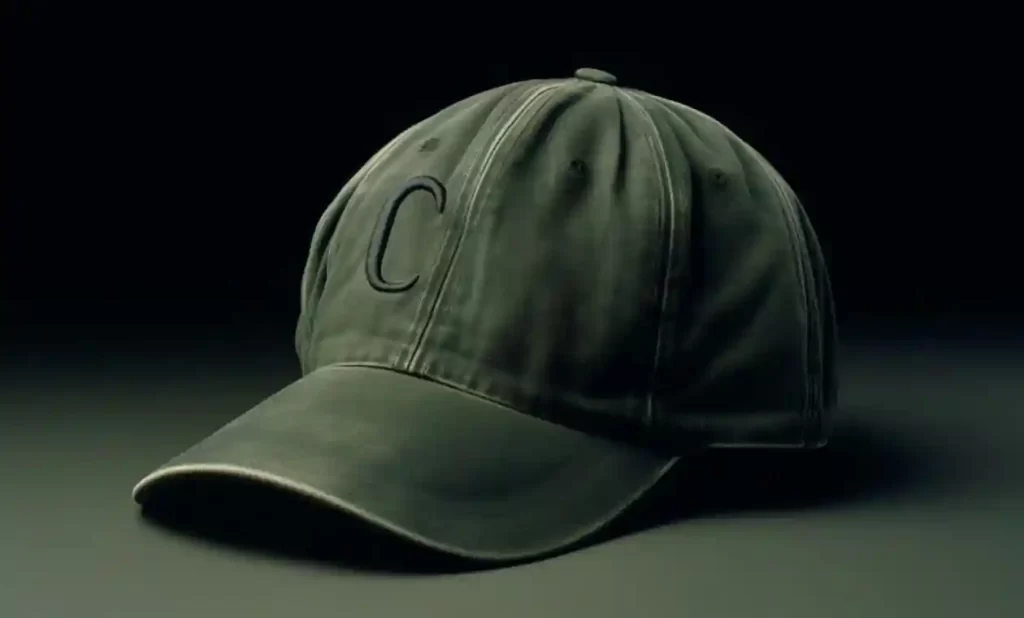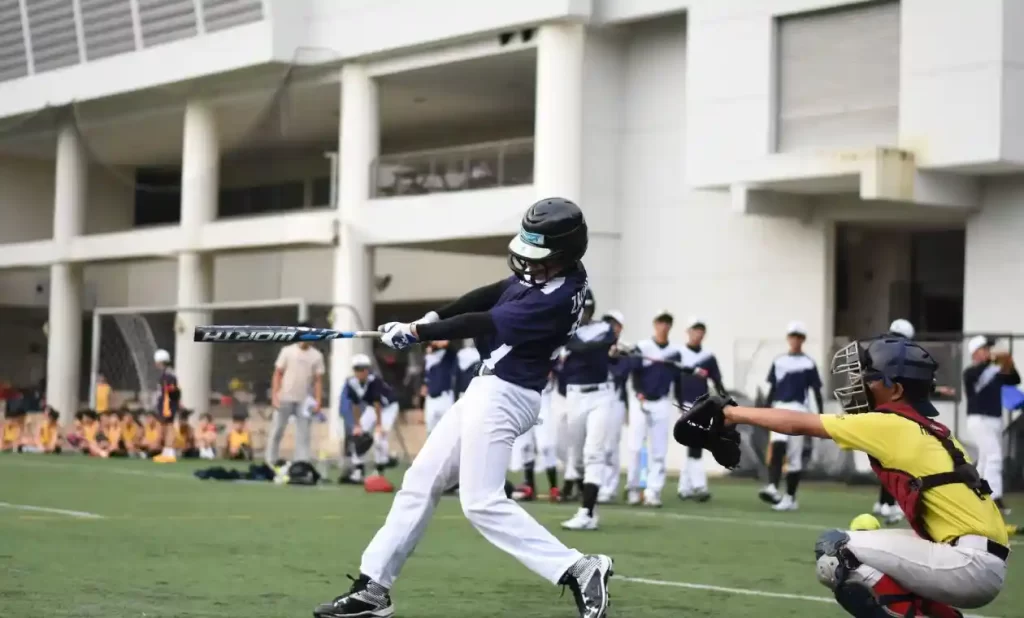
Image Credit-Pinterest
In the problematic international baseball strategy, one seemingly bizarre flow regularly sparks curiosity among spectators: catchers throwing to third base after a strikeout.
This particular play unfolds because the catcher, commonly stationed in the back of the domestic plate, swiftly redirects the ball in the direction of third base, catching each enthusiast and opposing group of shields. To the untrained eye, this maneuver might also seem counterintuitive, as the traditional expectation is for the ball to move in the direction of first base.
The cause behind this unexpected move lies in the tactical intricacies of the sport. By swiftly executing a throw to 1/3 base submit-strikeout, the catcher’s goal is to exploit a short-term lapse in the opposing group’s attention and coordination. This marvel play can lead to strategic blessings, together with catching a base runner off guard or beginning a double play.
Furthermore, catchers strategically tag the batter after a 3rd strike, reinforcing their crew’s protective role. This ritualistic act not only solidifies the strikeout but also serves as a mental tactic, instilling a feeling of manipulation and dominance in the sector.
As we delve into the intricacies of this play, we’ll explore the ancient roots, the decision-making technique in the back of deciding on third over first base, and the general strategic landscape that catchers navigate within the aftermath of a strikeout. Join us on an adventure through the hidden dimensions of the baseball method as we decode the charming phenomenon of catchers throwing to 0.33 base after a strikeout.
THE CATCHER’S ROLE IN BASEBALL
The position of the catcher in baseball is pivotal and multifaceted, extending some distance beyond the common photograph of a person crouched in the back of home plate looking forward to pitches. As the backbone of the shielding lineup, catchers play a strategic and dynamic position in the sport.
CATCHER’S RESPONSIBILITIES
- Receiving Pitches: Catchers are the linchpin among the pitcher and the rest of the sphere. Their primary duty includes receiving pitches with precision, ability, and an eager knowledge of the pitcher’s repertoire.
- Signal Communication: Catchers talk with the pitcher through an intricate system of indicators. These symptoms dictate the form of pitch to be thrown and are important in outsmarting opposing batters.
- Blocking Wild Pitches: When a tumbler hurls a ball in the dirt, catchers skillfully appoint blocking-off techniques, stopping it from eluding their hold close and granting base runners possibilities to increase.
- Throwing Accuracy: Catchers showcase their arm strength and accuracy through throws to bases, thwarting stealing attempts and reinforcing defensive techniques.
- Play Calling: They actively participate in play calling, supplying insights into protective positioning, pitch selection, and ordinary game strategy.
CONNECTION TO STRATEGIC DECISIONS AFTER A STRIKEOUT
After a strikeout occurs, the catcher steps into a pivotal strategic role
- Quick Decision-Making: Catchers want to make fast decisions based on the state of affairs — assessing the vicinity of base runners, the batter’s speed, and capability shielding plays.
- Exploiting Opportunities: By hastily throwing to 1/3 base, catchers take advantage of a short-term vulnerability in the opposing team’s defense. This surprise tactic can result in capitalizing on mistakes or starting up a double play.
- Psychological Impact: The catcher’s role extends past the physical. Tagging the batter after a strikeout now not only finalizes the play but also exerts mental stress on both the batter and the opposing group, organizing a sense of dominance.
In essence, catchers function as strategic orchestrators in the sector, seamlessly mixing protective prowess with tactical acumen to persuade the course of the game. Their obligations make bigger far beyond the seen actions, encompassing a nuanced knowledge of the game’s ebb and drift.
Why Do Catchers Tag Batters After a Third Strike?
The tradition of catchers tagging batters after a third strike is deeply ingrained inside the cloth of baseball, intertwining strategic nuances and ceremonial importance. This seemingly ritualistic act isn’t always simply a formality but a strategic maneuver with profound implications for the game.
Strategic Significance
- Solidifying the Strikeout: Tagging the batter after a 3rd strike serves as a definitive exclamation point to the pitcher’s accomplishment. It symbolizes the successful execution of a strategic plan to outsmart the batter and steady an out for the team.
- Preventing Dropped Third Strikes: By tagging the batter, catchers put off the danger of a dropped 0.33 strike turning into a potential base-running opportunity. This brief and decisive motion guarantees that the batter is formally out without any hazard of achieving first base.
- Maintaining Defensive Momentum: The act of tagging reinforces the team’s protecting momentum. It’s a collective reminder of the team’s commitment to precision and manipulation, placing the tone for the next performance.
Historical Context and Significance
- Roots in Baseball Etiquette: The tradition of tagging batters after a strikeout has roots in baseball etiquette. It serves as a mark of respect for the sport’s traditions and an illustration of sportsmanship.
- Ceremonial Closure: Historically, this act has been a ceremonial closure to the batter’s flip at the plate. It symbolizes the give up of a strategic war between pitcher and batter and the beginning of a new section in the game.
- Psychological Impact: The ancient continuity of tagging batters has created a mental impact. It instills a feeling of order and manipulation, not just for the teams worried but for the spectators who respect the
In precis, the tradition of catchers tagging batters after a third strike is a blend of strategic necessity and cultural reverence for the game’s traditions. It is a timeless practice that adds layers of meaning to the sport, connecting the prevailing to the rich history of baseball.
Choosing Between First and Third Base Throws
Choosing among throwing to first or third base after a strikeout is a tactical choice that hinges on a myriad of things, reflecting the difficult chess game that is the baseball method. The decision-making procedure includes sensitive stability of assessing the modern-day recreation state of affairs, the strengths and weaknesses of each offensive and protecting aspect, and the ability results of each choice.
Game Situation: The immediate context of the sport performs a critical position in the decision-making system. Factors consisting of the rating, inning, variety of outs, and the location of base runners heavily affect the catcher’s choice. In a near recreation, in which every run topics, catchers might choose the more secure throw to first to stabilize the out. However, in situations where aggressive protecting performances are wanted, throwing to 0.33 base ought to disrupt the opponent’s expectations and result in tremendous effects.
Base Runner Behavior: The conduct and positioning of base runners are paramount issues. If a base runner on first is taking a good-sized lead or is understood for competitive base stealing, a brief throw to first can be warranted. Conversely, if there’s a runner on 0.33 and the catcher anticipates an ability thieve strive, throwing to 1/3 can seize the runner off guard and result in a strategic out.
Pitcher’s Strength: The pitcher’s competencies and familiarity with pick-off moves have an effect on the choice. If the pitcher excels at brief and correct throws to a specific base, the catcher would possibly align their approach with the pitcher’s strengths. Alternatively, if the pitcher has a more potent hazard of catching a base runner off the shield at a particular base, that turns into a determining element.
Opponent’s Tendencies: Knowledge of the opposing team’s dispositions and scouting reviews is a key element. If the opposing team is understood for competitive base going for walks, the catcher may select to counteract this by means of throwing to the base wherein the offensive risk is maximum probably to arise. Understanding the combatants’ strengths and weaknesses allows catchers to anticipate their actions and make strategic choices for that reason.
Risk and Reward Assessment: Every strategic pass in baseball involves a calculated evaluation of hazard and reward. A throw to 0.33 base, while doubtlessly disruptive, includes a higher danger of mistakes and might allow base runners to boost greater effortlessly. On the other hand, a throw to first is a more secure play with a higher opportunity of success but won’t yield identical strategic blessings.
In essence, the choice among throwing to first or 1/3 base is a dynamic technique that requires deep expertise of the sport, brief wondering, and an ability to conform to the ever-converting instances on the sphere. It exemplifies the chess-like nature of the baseball approach, where every move is a calculated try to outsmart the opponent and gain a strategic aspect.
Comparing the Challenges: Pitcher vs. Catcher
In the symphony of baseball, the roles of pitcher and catcher are akin to lead performers, each with a completely unique set of challenges that form the rhythm of the sport. Let’s delve into the intricacies, comparing the demanding obligations of pitchers and catchers even as highlighting the wonderful challenges confronted by means of catchers.
Pitcher’s Challenges
- Precision in Pitches: Pitchers are tasked with handing over overpitches with pinpoint accuracy. Each pitch kind calls for mastery, and a slight deviation in launch or pace may be the difference between a strike and a ball.
- Reading Batters: Pitchers should keenly analyze the opposing batter’s dispositions and weaknesses. Successfully outsmarting the batter demands astute know-how in their preferences and the capability to alter strategies on the fly.
- Endurance and Stamina: Pitching is a bodily disturbing challenge that requires sustained persistence. Starting pitchers, especially, face the undertaking of retaining top overall performance over several innings.
- Pressure Situations: Pitchers regularly find themselves in excessive pressure conditions, mainly during critical moments in the game. Their mental fortitude is tested as they attempt to maintain composure and execute beneath stress.
Catcher’s Unique Challenges
- Managing the Pitching Staff: Catchers play a pivotal role in coping with the pitching body of workers. They want to recognize every pitcher’s strengths, weaknesses, and desired techniques, making sure effective communique and synergy for the duration of the game.
- Defensive Responsibilities: Catchers are the guardians of the domestic plate, tasked with stopping stolen bases, blocking wild pitches, and making accurate throws to bases. This needs agility, short reflexes, and a sturdy throwing arm.
- Signal Coordination: Coordinating alerts with the pitcher is a nuanced art. Catchers use a complex set of signs and symptoms to communicate pitch kinds, locations, and protective plays. Maintaining secrecy in this communication is essential to outsmarting opposing teams.
- Endurance Behind the Plate: The bodily toll of crouching in the back of the plate for prolonged periods is worrying. Catchers want brilliant endurance to live alert and agile at some stage in the game, especially whilst catching for power pitchers. Quick
- Decision-Making: Catchers make split-second selections, especially after a pitch is thrown. Choosing whether or not to throw to first or third base, dealing with stolen base attempts, and tagging batters demand fast cognitive processing.
In essence, whilst pitchers navigate the precision and method of delivering pitches, catchers orchestrate the protecting symphony, going through challenges that call for a mixture of bodily prowess, strategic acumen, and break-second decision-making. The collaboration among those two roles is at the core of baseball’s dynamic and strategic appeal.
HOW MANY TIMES CAN A CATCHER THROW TO FIRST BASE?
In the difficult ballet of baseball, the artwork of a catcher throwing to first base is difficulty to guidelines and barriers that upload a layer of method to the sport. Let’s delve into the considerations, limitations, and regulations governing how normally a catcher could make this strategic flow.
CONSIDERATIONS AND LIMITATIONS
- Live Ball Situations: A catcher can legally throw to first base in live ball conditions, generally in response to a pick-out-off try. This is a strategic move aimed at catching an overzealous base runner off guard.
- Pick-off Attempts: The frequency of a catcher’s throws to first base frequently depends on the effectiveness of choose-off attempts. These tries are cautiously timed movements to catch a base runner taking a prolonged lead.
- Base Runner Awareness: Catchers keep in mind the bottom runner’s awareness and pace whilst determining whether or not to try a throw first. If a base runner is vigilant and short, the catcher may also opt for opportunity protective strategies.
- Pitcher-Catcher Coordination: Successful select-off tries require seamless coordination between the pitcher and the catcher. The catcher must count on the pitcher’s move and execute a brief and accurate throw to first base.
RULES AND REGULATIONS
- One Throw according to Pitch: Generally, catchers are allowed one throw to every base per pitch. This means that during a single pitch, a catcher can make a choose-off attempt to first base.
- Umpire Discretion: Umpires preserve discretion in figuring out the legality of pick-out-off tries. If a catcher appears to be trying immoderate throws to first base without an affordable danger of creating an out, umpires may also intrude.
- Intentional Delays: Deliberate tries to disrupt the float of the game, which includes intentionally delaying the throw to first base without a legitimate select-off attempt, which may be a challenge to umpire intervention or warnings.
- Pitch Count Impact: Excessive pick-off tries can impact the pitcher’s pitch count number and can be strategically used to tire out opposing pitchers.
- Baserunner’s Lead Distance: The distance a baserunner takes from first base affects the viability of a pick-out-off strive. A larger lead provides a greater opportunity for a hit throw.
Understanding those concerns and adhering to the regulations surrounding a catcher’s throws to first base adds an element of approach and anticipation to the protecting play. It’s a delicate dance among the catcher, pitcher, and baserunner, every contributing to the ebb and drift of a properly-finished 3-hitter.
CONCLUSION
The reputedly unconventional exercise of catchers throwing to 1/3 base after a strikeout is deeply rooted within the strategic intricacies of baseball. This particular play serves as a strategic maneuver, capitalizing on a temporary lapse in the opposing crew’s attention and coordination.
By hastily redirecting the ball to 0.33 base, the catcher’s goal is to take advantage of this window of possibility, doubtlessly catching base runners off protection or starting up a double play. The act of tagging the batter after a 3rd strike no longer only finalizes the play but also exerts psychological stress on both the batter and the opposing team, organizing an experience of dominance.
This strategic element goes beyond the surface of ordinary plays, showcasing the nuanced choice-making and calculated moves that make contributions to the ever-evolving chess game at the baseball diamond. It’s a testimony to the intensity of strategy woven into every factor of the sport, in which even reputedly recurring actions convey profound implications for the overall dynamics of play.
Baseball, at its core, is a sport where every circulation is a calculated step in a grand strategy, and catchers throwing to third base after a strikeout exemplify this strategic depth.
How much did you like this From the Diamond: The Psychology Behind Catchers’ Third Base Throws, please share your view in the comment box, also share this blog with your friends on Social Media so they can also enjoy this blogs for more blogs visit baseballpropicks.com
Related Article –

Meet Daniel Anderson, the heart and soul behind Baseball Pro Picks. At 49, Daniel’s life has revolved around baseball, a passion that’s as strong today as it was when he first fell in love with the game. Living in the USA, Daniel has dedicated countless hours to watching, analyzing, and understanding every pitch, hit, and home run, making almost no game missed. His deep-rooted love for the sport is matched only by his commitment to sharing insightful, expert analysis with fellow baseball enthusiasts. With decades of experience and a keen eye for the game’s nuances, Daniel brings a unique perspective that enriches Baseball Pro Picks. Trust Daniel to guide you through the intricacies of baseball with the authority and trustworthiness of a true aficionado.












